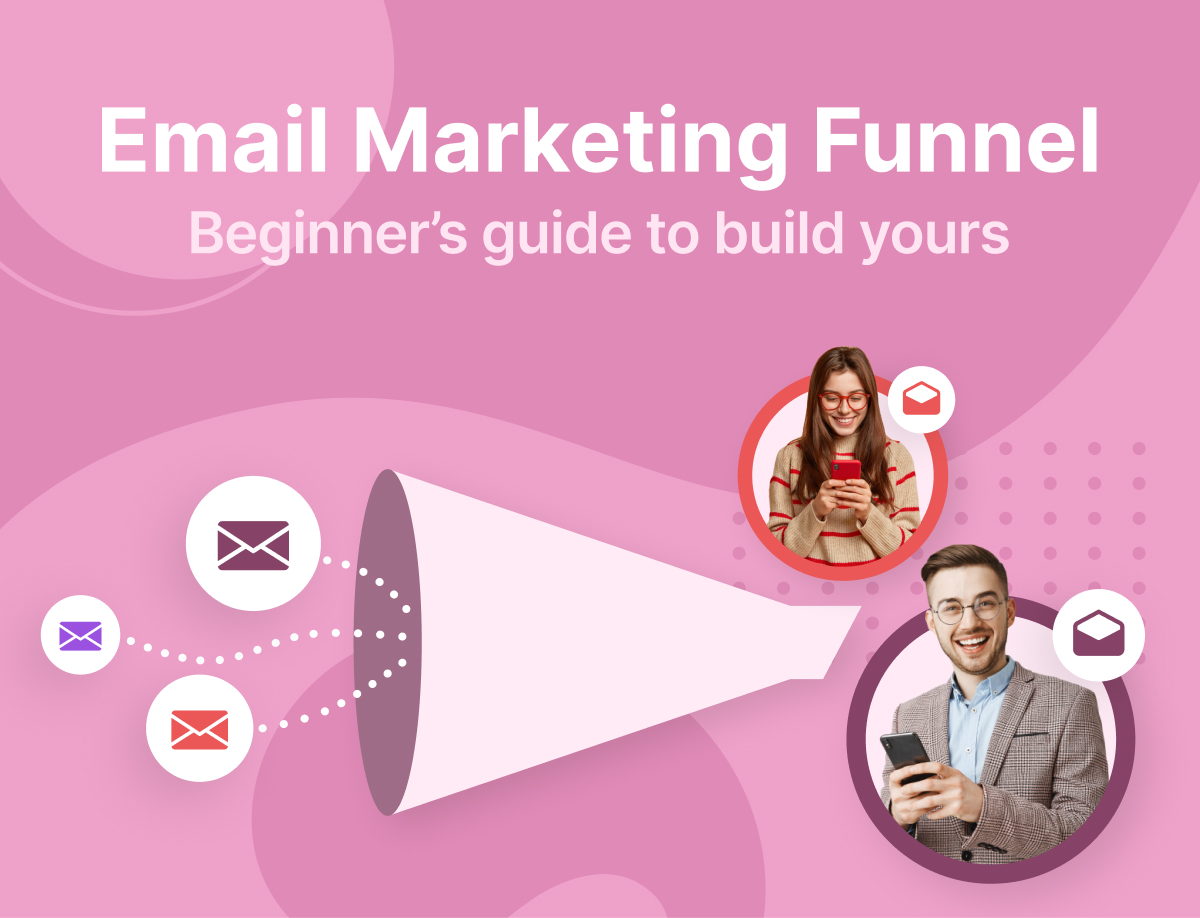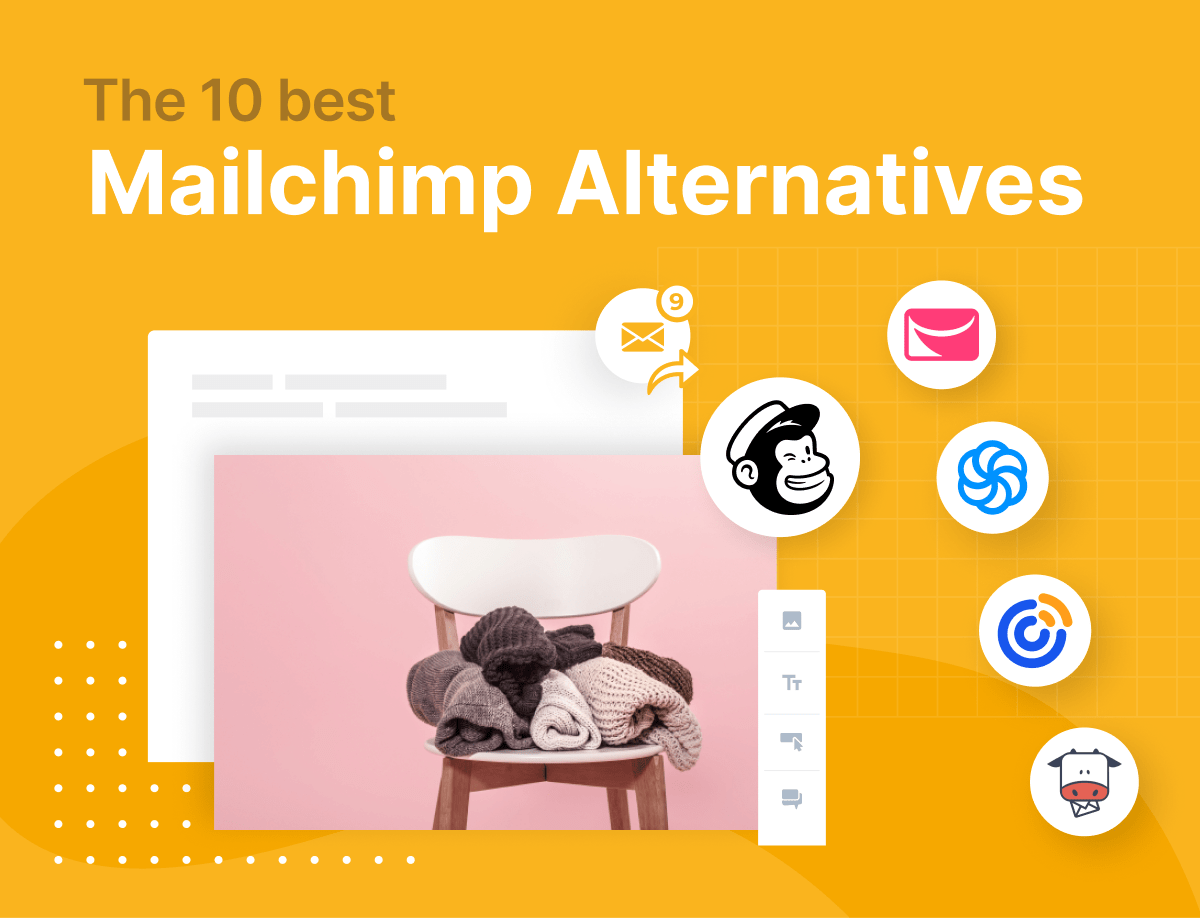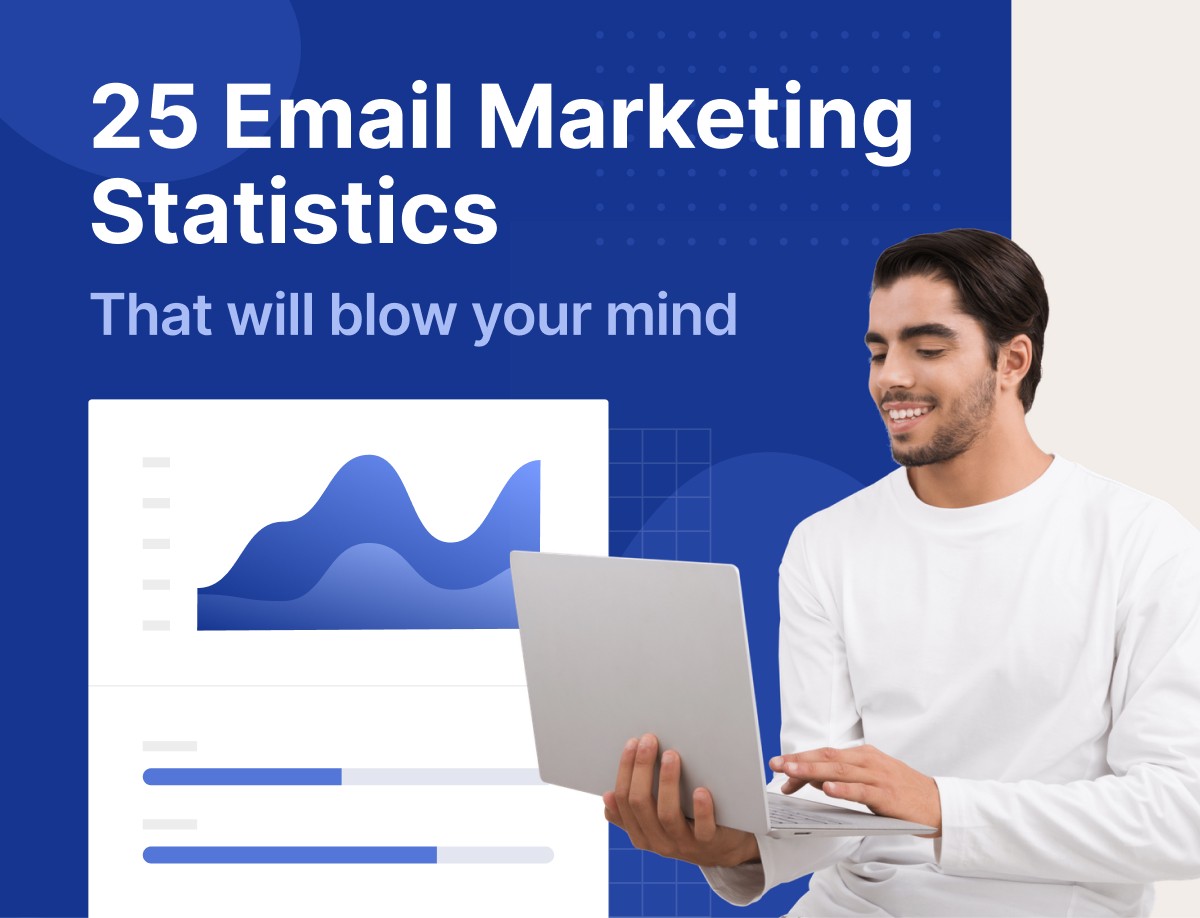The money, they say, is in the list. In other words, to make good sales online, you just have to build an effective email list. And for that to happen, you have to learn the art of building an email marketing funnel.
Here’s why: even though email marketing offers you an ROI of up to 4.400 percent, you won’t get results if your email sends aren’t being read.
What if there was a way to increase the chances of your subscribers opening and reading your emails?
An email marketing funnel fixes by helping you send the right emails that match the different stages of your subscribers’ buying journey.
If this sounds new and confusing, don’t worry. In this guide, we’ll tell you what an email marketing funnel is, why it is important to build one, and how to go about it. We’ll also give you practical steps to improving your email marketing funnel.
Here’s an outline to guide your reading:
- What is an email marketing funnel?
- Benefits of building an email marketing campaign
- How to build an email marketing funnel
- Steps to improving email marketing funnel
- Conclusion
What Is An Email Marketing Funnel?
For a long time, digital marketers have talked about the importance of email lists and converting your leads to loyal customers.
The question is: how exactly do you convert subscribers who haven’t bought anything from you into loyal customers? This is where an email marketing funnel comes into play.
It’s probably not your first time hearing about sales funnels or marketing funnels. An email marketing funnel is similar.
An email marketing funnel is a representation of your customer journey. It shows how your subscribers move from being aware of your brand to making a purchase and then becoming advocates of your brand.
With this information at your disposal, you can anticipate your subscribers’ needs and create the right email content for them at the right time.
In essence, an email marketing funnel helps you ensure that you don’t put the cart before the horse while interacting with your audience through emails.
Every standard email marketing funnel has these 5 stages:
- Brand awareness
- Consideration
- Conversion
- Loyalty
- Advocacy
Here are graphical illustrations of the stages of an email marketing funnel:
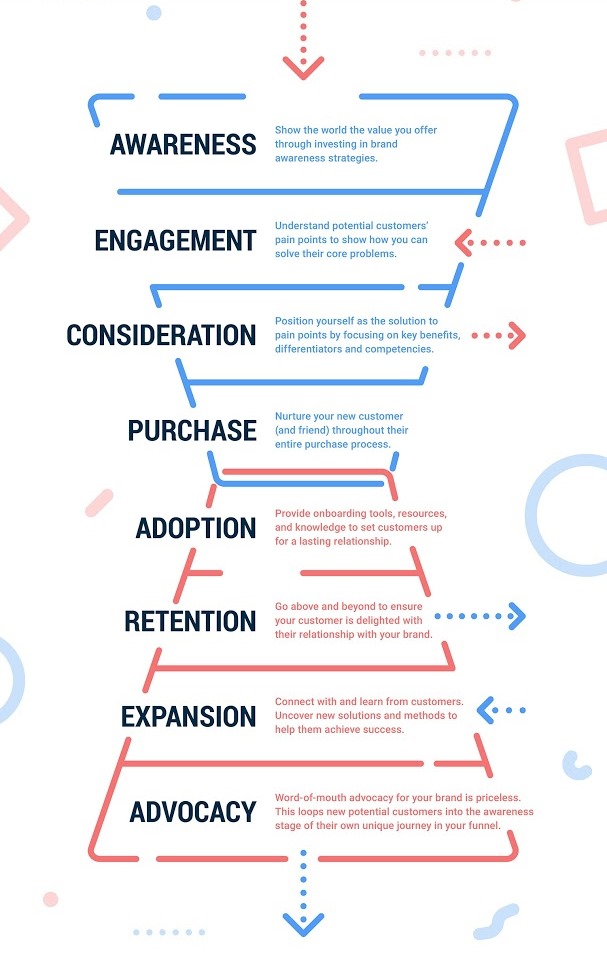

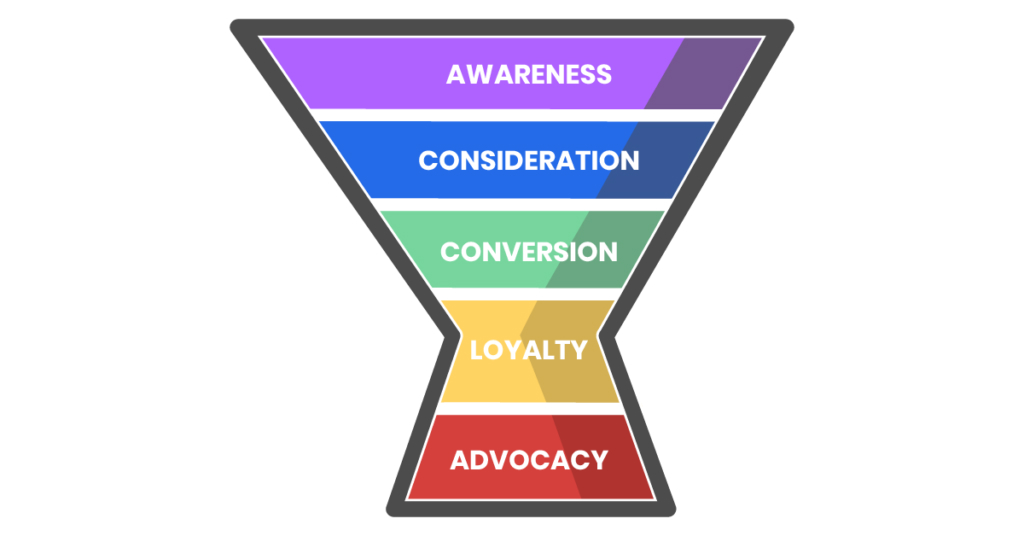

Note that an email marketing funnel doesn’t have to be one-size-fits-all. For example, if yours is a business that sells to wholesalers or retailers, your email marketing funnel will be different from one that sells directly to consumers.
Feel free to tweak yours according to the unique nature of your business and how your audience typically interacts with your brand. Already wondering how to go about building a custom email marketing funnel? Not to worry, we’ve got you covered. Details on that shortly.
Next, let’s see why you should build an email marketing funnel and what it can do for your business.
Benefits of the Email Marketing Funnel
You stand to gain a lot by building an email marketing funnel for your business.
When you have an email marketing funnel, you can be sure that your email marketing efforts are focused on the right people at the right time.
Here are other reasons why you need an email marketing funnel for your business:
Simplifies the Customer Journey
How many times have you wondered what the next email to your subscribers should be?
An email marketing funnel helps you answer this question by giving you a clear picture of your customer journey. It provides a map of what your customers’ decision process looks like at each stage of their journey.
This way, you can target your audience better because you’re clear on how your subscribers transition along their buying journey.
With a simplified customer journey, you have access to information with which you can develop an email marketing strategy without guesswork.
Thus, the next email you send will nudge your subscribers from their current position in the funnel (or customer journey) right onto the next.
Allows for Personalization in Email Marketing
An email marketing funnel is a major tool for personalizing your emails. Since personalization in email marketing has been proven to increase email open rates by 29 percent and click-through rates by 41 percent, it makes having an email marketing funnel all the more important.
Do more than just starting every email you send with your subscribers’ first name. Speak to their needs directly.
How do you figure out what these needs might be? Conduct a survey, study their browsing preferences, etc.
For example, if a subscriber is at the brand awareness stage, you’ll have to send emails that’ll help them get familiar with your brand. If they are at the conversion stage, you might want to send them emails containing discount offers to encourage them to buy more.
In essence, an email marketing funnel will guide you in creating email content that your customer can relate to at their stage of the customer journey.
It Helps in Engaging Customers
In interacting with your audience, you have to engage them enough to make them stay and interact with your business. Since emails are one of the ways you interact with them, the right email marketing funnel strategy goes a long way to make your emails worth their time.
Whether your aim is to generate sales for your eCommerce store or physical shop, drive traffic to your website, or get people to sign up for your paid courses, an email marketing sales funnel is a great way to nurture your audience towards taking any of these actions.
Apart from guiding you in creating email content for your subscribers, email marketing funnels also help you decide on the appropriate lead magnets to use for different categories of subscribers.
It Is Measurable
Email marketing funnel makes it possible for you to know for sure how the emails you send impact your ROI. Being able to measure the impact of your email marketing efforts is a good thing.
This is because you’ll be able to know what’s working and what’s not and make adjustments where necessary.
You’ll also be able to tell what stage of the funnel you’re losing your customers at. This way, you can pause your efforts and restrategize.
For example, if you almost always lose your subscribers just before they get converted, you’re probably not convincing enough or your conversion process is tedious.
How to Build An Email Marketing Funnel
As we promised earlier, here are simple steps to take when you’re ready to build your email marketing funnel.
Map Out the Customer Journey
The customer journey you create has to be unique to your business.
Mapping out a concise customer journey is the very first step to creating an effective email marketing funnel. So, it is important to know how your customers transition from being prospects to being paying customers.
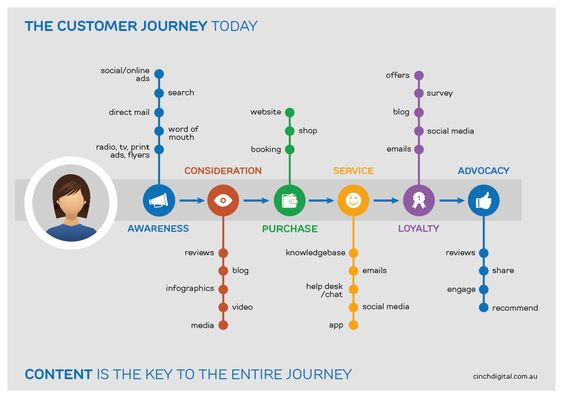

When you map out your customer journey, your marketing goals become clear. And you are able to evaluate your progress.
Also, you’ll be able to avoid making the mistake of sounding salesy too early in your emails.
Generate Leads
You need actual email addresses to get your email funnel up and running. That is how you go about collecting those emails.
Note that it’s possible to collect a zillion email addresses with little or no conversions to show for it. One of the ways you can avoid this is to make sure that you collect the email addresses of “potential customers”.
Make sure whatever you do- such as content creation- to collect email addresses is directly targeted at your ideal customers. It is better to have 10 subscribers who respond well to your emails, than 100 who don’t care about your business.
With that said, here are the two steps to generating leads for your email funnel:
Set up Opt-in Forms
Opt-in forms are there to help you capture the contact details of your visitors, such as email addresses, phone number, etc.
Adoric helps you create targeted and personalized opt-in forms you can use to automatically generate leads for your email funnel. You can embed these forms anywhere on your website or blog in the form of popups, slide-ins, and floating bars that your web visitors cannot miss.


With Adoric, you can also A/B test which copy or call-to-action button works best with your opt-in form.
Choose an Email Marketing Tool
Choose the best email marketing funnel software for your business. Email marketing tools help you automate your email marketing. With tools such as Moosend, you can create a sequence of emails addressing one point per email for each category of customers in your email funnel. These emails will be automatically sent to your subscribers.
Here is a list of email marketing tools with free plans that you can choose from:
- MailChimp
- Sender
- Omnisend
- Sendinblue
- Benchmark Email
- SendPulse
- MailerLite
- Mailjet
- Moosend
- Zoho Campaigns
- EmailOctopus
Create Lead Magnets


Why should anyone bother giving you their emails? Not unless you offer something in return for that gesture. This is where a lead magnet comes to play. Basically, it’s an incentive you use to entice visitors to give away their email addresses.
However, note that lead magnets can also be used are not only useful for getting email addresses for your email funnel. You can also use them to motivate your customers to take other actions as they proceed along the customer journey.
Having said that, your lead magnet must be relevant to your audience to be effective. If it’s something they can put to use immediately, you’ll get even better results.
A new visitor to your website isn’t likely to trust your brand at first. When you offer valuable information for free in the form of a lead magnet, they’ll be persuaded to give you their contact.
The easiest way to determine what lead magnet to offer is by understanding your audience. This should include their wants or needs, the solutions they want, and the nature of their problems.
You also need to understand how your offer will make their lives better and why they would be interested in what you’re offering.
Figure these out and you’ll know what kind of lead magnet will appeal to them. If you want a detailed guide on creating lead magnets, read this article.
Create a Set of Introductory Emails
Remember that you’re nurturing a relationship. You don’t want to start out sending sales emails to your prospects. You just might put them off. Give them the chance to get to know your brand and build a sense of closeness.
The type of emails you send can influence how well your subscribers transition from awareness to the buying stage in their buying journey.
When you start with welcome and introduction emails, chances are that your subscribers will be receptive to subsequent emails you’ll send as they proceed along the customer journey.
Here are a few things you can talk about in your first set of emails:
- Tell your subscribers the kind of information your content will give them and how often you’ll be sending emails.
- Tell them what your brand stands for, your vision and core values.
- Give informative or educational content that your subscribers will find helpful.
- Talk about their pain points and how your brand is positioned to solve their problems. At this point, make sure to emphasize the benefits of your products or services to them.
Remember that you don’t have to cram all the points listed above into one email. Create a sequence of emails addressing one point per email.
Connect with Both New and Existing Customers
It’s easy to focus on new leads and think that existing customers can move along the customer journey just fine.
That’s a bad move, don’t do it. The reason is, your existing customers are your potential brand advocates.
Thus, you have to put in lots of effort in retaining your existing customers. One easy way to go about this is sending them sales emails but without being pushy or spammy.
But this shouldn’t be an excuse to neglect your new customers. You need them to sustain your business as well.
Steps to Improving Email Marketing Funnel
Do you have an email funnel that isn’t giving you the results we’ve mentioned here? Do you need a checklist to evaluate your email marketing funnel?
Here are steps to optimizing your email marketing funnel:
Don’t Forget Your Business Goals
Your business goals should dictate everything you do in your business. If your business goal is to make sales, make sure your email funnel is built to lead your prospects and customers to make purchases.
From time to time, reevaluate your email funnel and make necessary adjustments to make it align better with your brand’s goals.
Make It Your Own Funnel
Email marketing funnel templates are not bad in themselves but you want to make sure it represents the customer journey for your business. If it doesn’t, you’ll have to make it yours by adding missing stages and/or removing those that don’t apply to your business.
Choose Quality Over Quantity
Other reasons people don’t read promotional emails is either because they get the emails too often or the emails are simply boring to read. 2 emails a week may do better than 5 emails a week. You don’t want to stifle your subscribers or they may get put off and unsubscribe to your emails.
Instead, concentrate on providing them with quality content that they can find valuable. That way, you’ll retain their interest in your brand and keep them progressing along the customer journey.
Set Measurable Goals
How do you know that your email marketing funnel is doing well if you can’t measure your results? You can decide to measure the number of subscribers, click-through rate, number of downloads, or return on investment
Conclusion
Building an email marketing funnel is the first step to succeeding with email marketing. And you have to be strategic about it to see meaningful results.
Thankfully, you don’t have to be a marketing wiz to build an email marketing funnel. By following the steps we shared with you in this post, you are halfway through the task already.
If you need help generating leads from your website, try out any of our opt-in form templates. You will love them. And that’s not all: you can get started with them for free.
Know a colleague that might need this? Hit the share button and help your friend win with email marketing.

